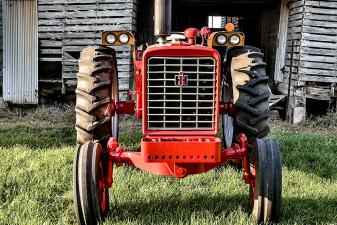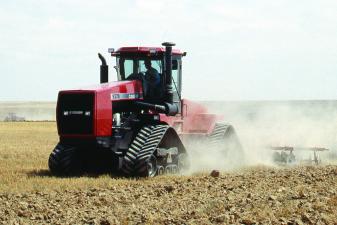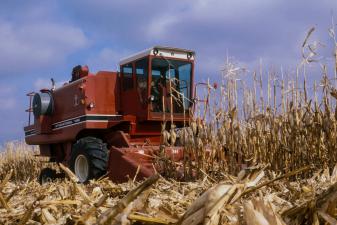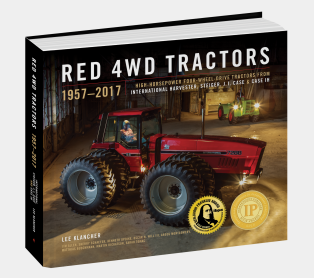The Secret 4366 Garage

Secrecy was of the utmost importance in the competitive tractor market of the 1970s and 1980s. This competition--particularly between Deere and Harvester--is covered in the new book, Snoopy and the Spy (October 2024, Octane Press).
In the early 1970s, Steiger made a deal so massive that it assured the company's place in the history of tractors, when they agreed to build the 4366 four-wheel-drive tractors for International Harvester. The multi-million-dollar contract gave Steiger enough cash to build a brand-new factory and continue to grow. You can learn more about IH's corporate history here.
The model would be a hybrid that used a Steiger chassis with an International engine, axles, and a few other parts. They paired their young wunderkind engineer, Paul Nystuen (who was still in college), with two long-time Steiger fabrication wizards, Jerry Joubert and Al Lieberg, and locked the three of them into a dingy building in Fargo to get the job done. It wasn't the only time IH used a secret workshop stuffed with brilliant minds to keep their cutting-edge programs below the radar of their competitors.
Paul Nystuen was interviewd by author Lee Klancher for the book Red 4WD Tractors. Here he tells the story of the making of the 4366.
---
PAUL: I don't know how it really started, because I think the deal was put together before me, but I think, through Les and Gene and Jack Johnson and whatever, somehow IH, International Harvester, they got together and they decided that they wanted Steiger to build them a four-wheel-drive tractor. I suppose they probably figured they could do it more economical and get volume and didn't have to invest the capital and things like that, at least IH did. We got on a secret project. It was myself, Jerry Joubert, and Al Lieberg. Jerry and Al were both experimental shop personnel, could do everything, cut, weld, you name it. I was the engineer, and I think that was between my ... It was over a summer anyway, before my senior year. We were setup in a building very close to the Steiger plant, and we were isolated. Nobody else was supposed to get in there, and I ended up drawing up a frame structure for the International 4366.
 The deal that created the 4366 would spawn the most important relationship in Steiger history—a partnership with International Harvester. Wisconsin Historical Society / 129090
The deal that created the 4366 would spawn the most important relationship in Steiger history—a partnership with International Harvester. Wisconsin Historical Society / 129090
PAUL: Now, International, they provided and wanted their own axle, their own engine, and wanted some of their own styling, but as far as the frame and some of that, it was supposed to be very similar to the green Steigers, only with the IH look to it, the styling. I met with some of the IH people. We met with them. They provided some drawings on their axle, which it was a bar axle, the wheels, how they wanted those, and the paint scheme, and then they had the hood. The hood was industrial design pictures, and so we did all that. I did all the details of that, and then Al and Jerry Joubert, they built the thing and we were setup in this shop behind the main plant.
LEE: Is that shop still there by any chance? Do you know?
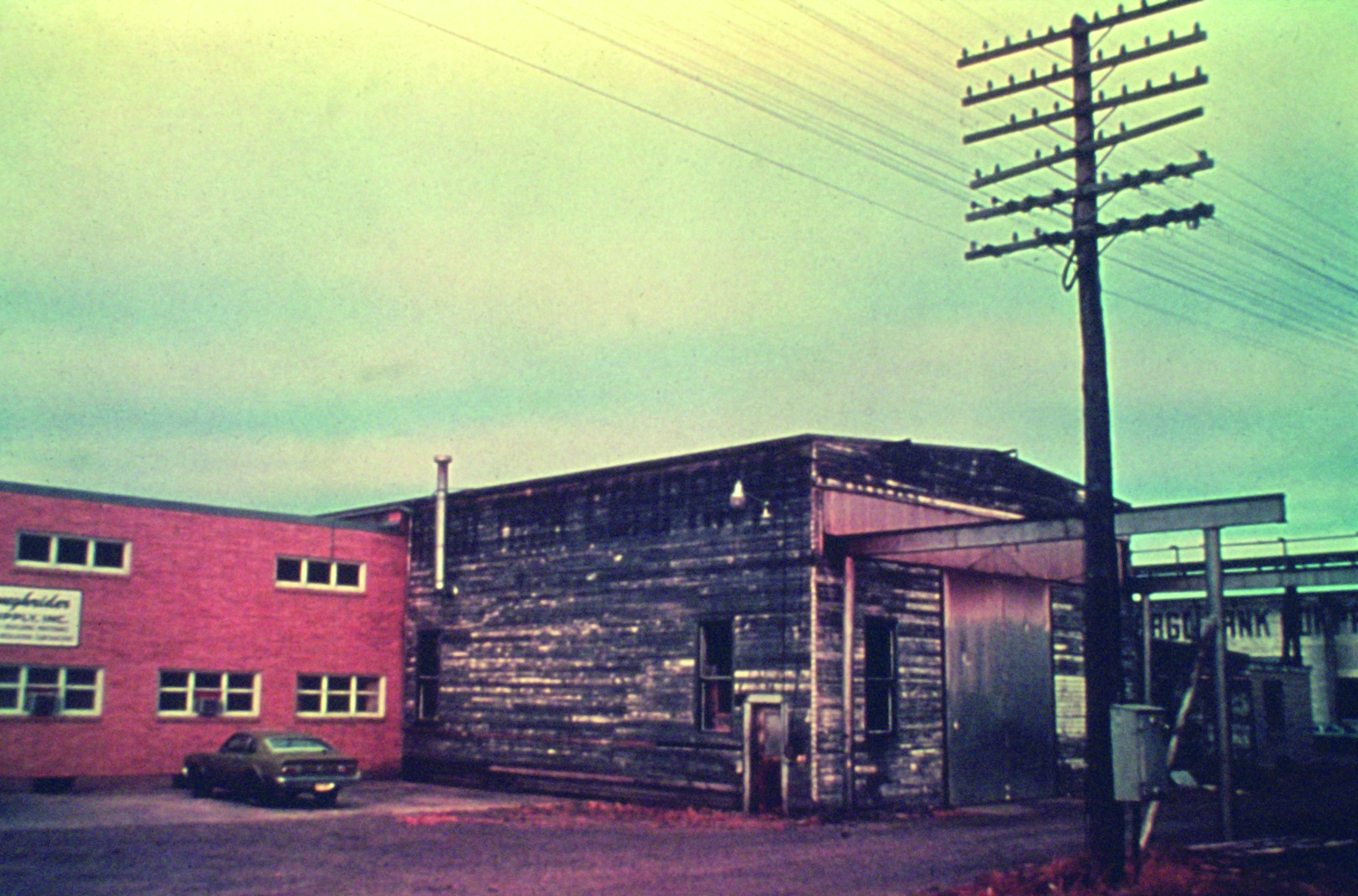 The Steiger Tank Building
The Steiger Tank Building
PAUL: You know, I'd have to drive by it. By that time, Steiger was out of the Fargo tank building. They had moved over to another location before this big, new plant was built, and it was behind there. It probably is still there, but I'm sure it's not part of Case IH now. It probably was even a leased building. What it was, believe it or not, it was the building that Ridgerunner was actually built in for a while. You ever hear of the Ridgerunner?
LEE: No.
PAUL: That was a dual-track, all-terrain vehicle that Steiger got into, trying to diversify. In the big craze, when the snowmobiles were big, they came up with this Ridgerunner, which I'm sure somebody else had ... I'm sure Les and company brought it in, and they tried to turn it into a business, but it didn't. It was going down, or was phasing out, when we moved into the building and did the IH one, 4366.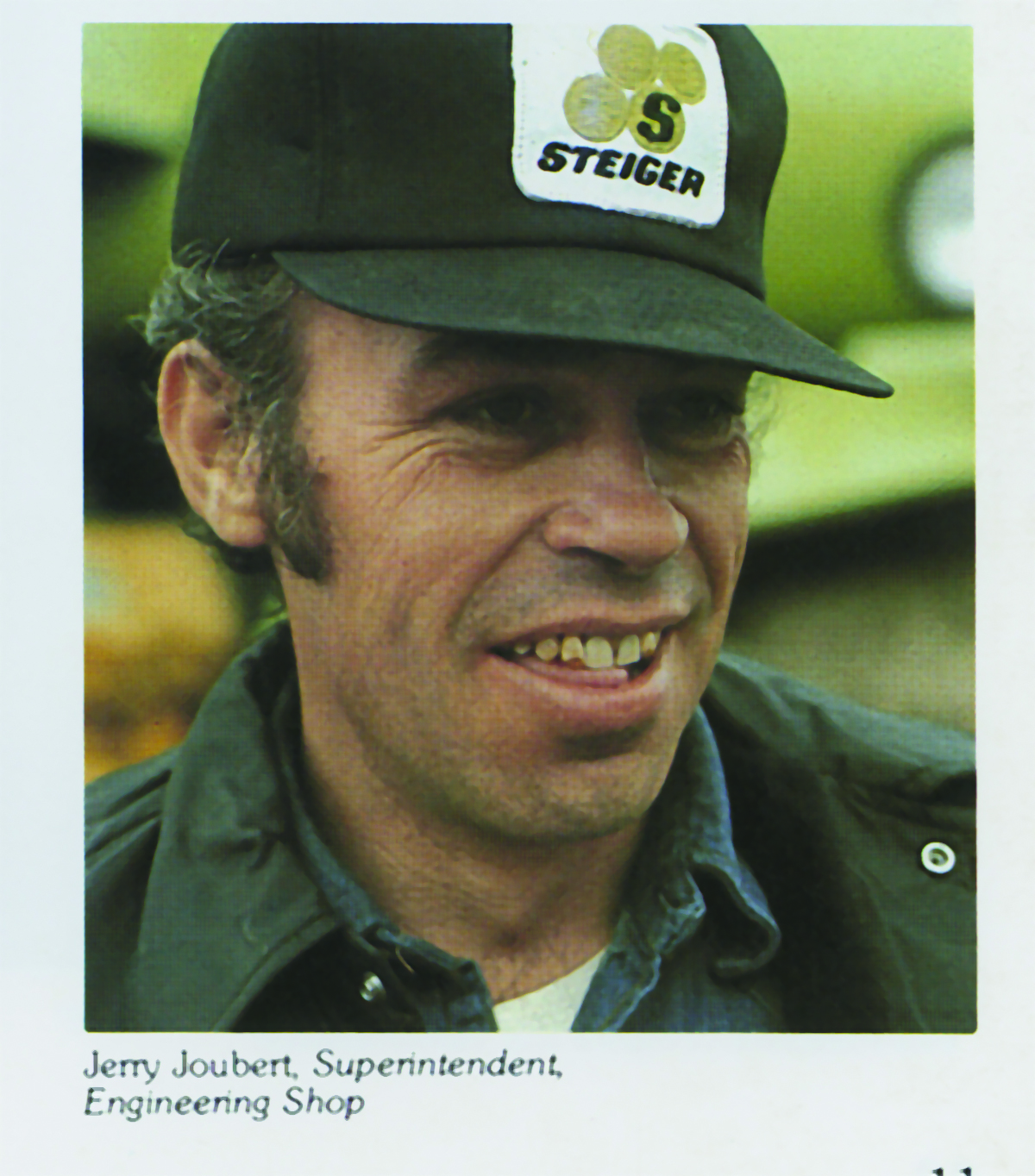 Many of the early Steigers were laid out by Jerry Joubert, who was a wizard at working with metal. Joubert came up with the design of some of the heavy steel frames of the Series I machines by hand. Wisconsin Historical Society / 129099
Many of the early Steigers were laid out by Jerry Joubert, who was a wizard at working with metal. Joubert came up with the design of some of the heavy steel frames of the Series I machines by hand. Wisconsin Historical Society / 129099
LEE : Was it one of those cab? I remember in the '70s there was those cabbed things with two tracks and heat. It almost looked like a Volkswagen, the ones I remember. Something like that. Is that basically what they were doing?
PAUL: Yeah. It didn't have cab on it, as I remember, but it had the dual track. I wonder if a person Googled it if you couldn't find old pictures of Ridgerunners. They were quite a little machine. We had one in the shop that we used for driving back and forth to carry some stuff, but that was just because they were convenient, let me put it that way.
LEE: Yeah. Did they actually sell them?
PAUL: Yeah. Oh, yeah.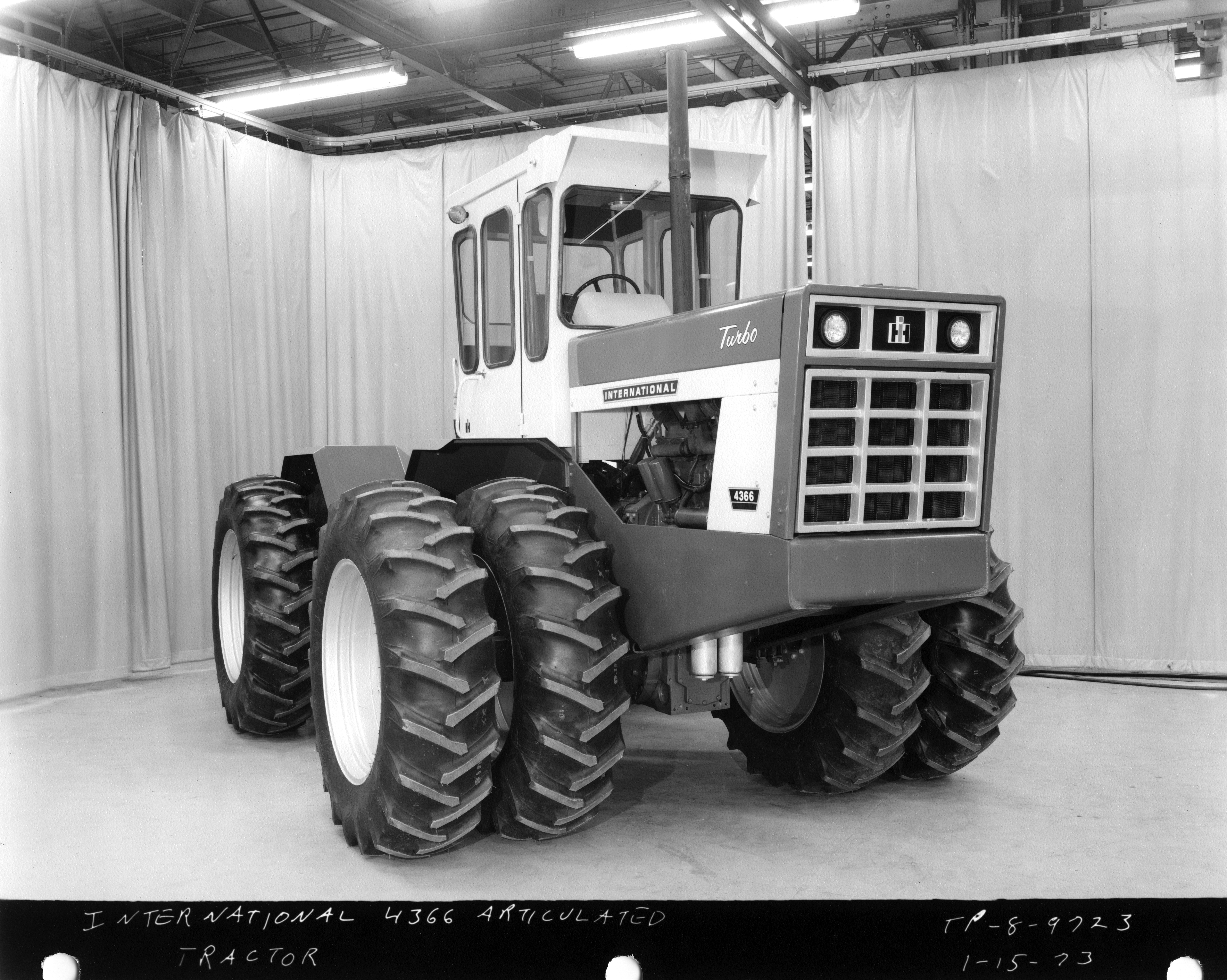 The Steiger-built 4366 photographed in January 1973. The contract with Harvester to build this tractor was one of the most important deals in Steiger history, providing the growing company much-needed capital and guaranteed sales. Paul Nystuen Collection
The Steiger-built 4366 photographed in January 1973. The contract with Harvester to build this tractor was one of the most important deals in Steiger history, providing the growing company much-needed capital and guaranteed sales. Paul Nystuen Collection
LEE : Oh, they did? Oh, they did? Oh my gosh, I wasn't aware of this. I see a thread about it, but I don't see pictures. I will clearly have to dig that up. That's super cool.
PAUL: Oh, yeah. It was not a big vehicle. You could haul a couple people, two or three people or something like that, but it was mainly one, two people.
LEE: Yeah. Yeah, there's very little on it. Okay. You went into the Ridgerunner building . . .
PAUL: Yeah. Both of them worked for Steiger for many years, Al much longer than Jerry, because Al went from experimental shop. He got into the production side and actually became a supervisor over there.
LEE: Okay.
PAUL: Yeah.
LEE: You guys built this thing in secret, and it's just the three of you, it sounds like, in this room, right? Doing it? There was nobody else in there really?
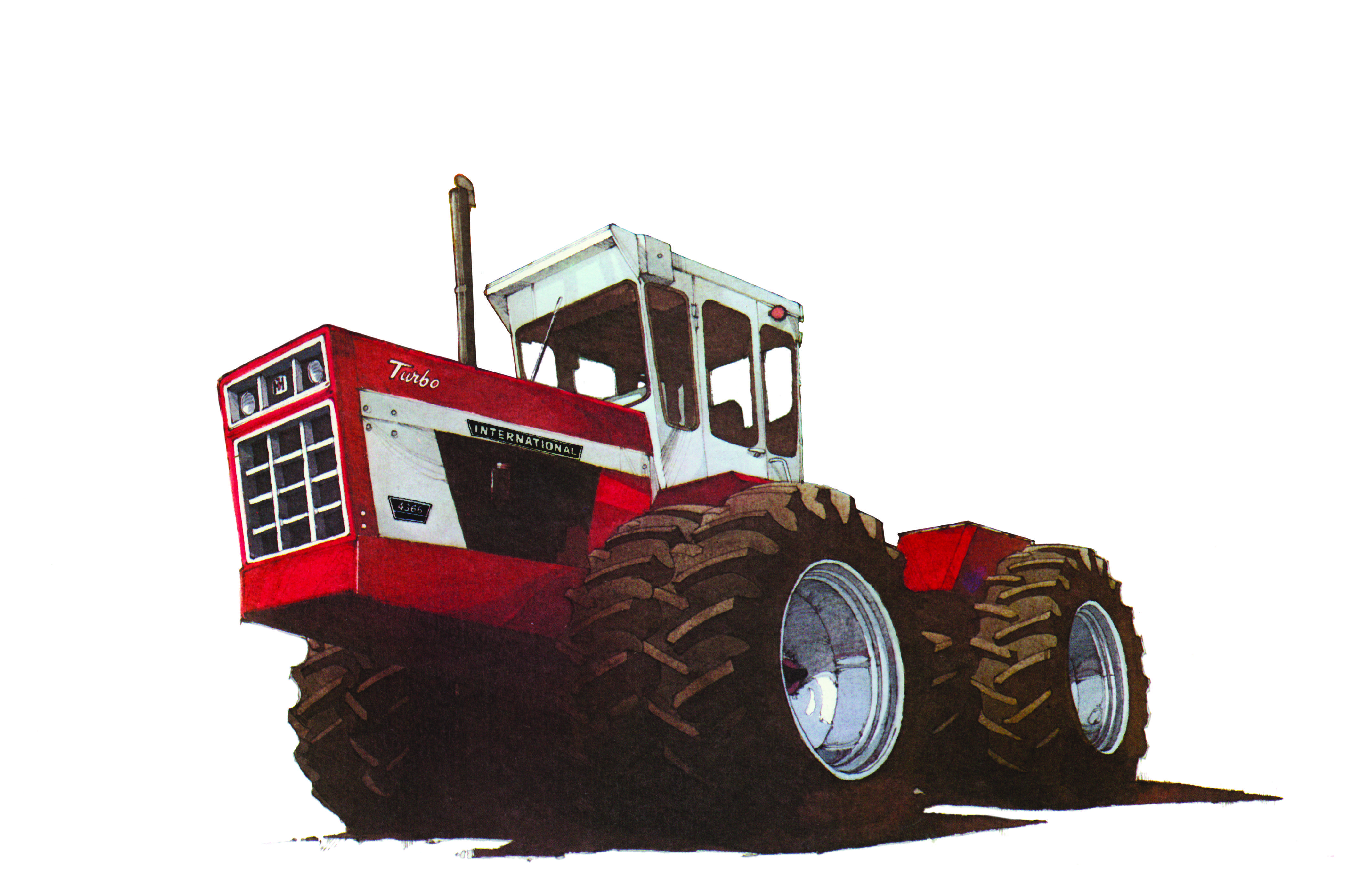 Steiger and Harvester came together to build the 4366. In spring 1974, IH purchased 1,000,000 shares of Steiger stock, which provided cash for the struggling Steiger Tractor, Inc. Steiger would turn that cash infusion into new technology. Wisconsin Historical Society / 129047
Steiger and Harvester came together to build the 4366. In spring 1974, IH purchased 1,000,000 shares of Steiger stock, which provided cash for the struggling Steiger Tractor, Inc. Steiger would turn that cash infusion into new technology. Wisconsin Historical Society / 129047
PAUL: Nope. Pretty much the three of us. Yep. Then it was shown to IH, the IH people. Again, keep in mind they provided some of the main components, as you might imagine, engine and axles, that type of thing.
LEE :Yeah.
PAUL: The transmission was the same type of transmission that was on the Steigers at that time. It was a Spicer 1010, I think.
LEE: Yeah.
PAUL: With a dry clutch type of approach. The dropbox is the same thing that was on a Steiger tractor. Of course, the cooling system kind of became separate, but that was radiator and things like that. But at that time, I was a little smarter. Second time around, I was a little smarter, so I documented things a little better and did better layouts and things like that, but we got it done. They guys, they didn't take a lot of coaching and whatever. I give them an awful lot of credit. They knew as much about it as I did.
LEE: Yep. Again, before you even got out of college, you got to draw a tractor. Not many engineers get that experience. That's pretty amazing.
PAUL: No, that's right. Worked out really well. That 4366 and that program, and whatever, led to the building of the big Steiger plant, because at that point, they came into an agreement where Steiger would provide International Harvester-branded tractors and build Steigers and Internationals down the same line. I'm pretty sure that that's what initiated building that 400,000-square-foot building in Fargo.
LEE: Sure. That would make sense.
PAUL: Generated enough volume and things like that to be able to do it. Now, I didn't do a lot of interface on the business. On the business side, you can imagine. That was more Jack Johnson, Les Melroe, probably Gene Dahl. Those people are the ones that would have done that.
LEE: Yeah, and that makes sense. Anything else you remember about the 4366, changes you had to make, or big challenges, or interesting things that happened while you were building it?
PAUL: Gordie Irwin was the chief engineer, by the way, during that period of time.
LEE: Mm-hmm (affirmative).
PAUL: First Steiger tractor. He was definitely my supervisor. He would come over and take a look once in a while. The cropped fenders on the 4366, that was because I was off by two inches on my layout, and so that became two inches higher, the fender on the side, than it was on the back. Gordie came over and he looked at it, and I knew I had screwed up. I looked at it, and I was pretty embarrassed and, of course, bad news, whatever. He looked at it and says, "You know, we'll just cut that bottom edge off, or the back panel, and you make it symmetrical on both ways, and it'd look fine."
LEE: Were you guys looking at a drawing, or were you looking at actually a completed unit when you guys noticed this?
PAUL: Oh, no. That was a completed unit.
LEE: That was a completed unit. Okay.
PAUL: We didn't look at drawings too terribly much. I had them, and I kept all the parts and pieces in the trailer. If I remember right, I think Al or Jerry cut it off, and I think I ground it down. I could handle a grinder pretty good. I can tell you that.
________________________________________________________
To find more firsthand accounts of the making of these incredible machines, check out the book, Snoopy and the Spy, which brings to life the battle between Deere and Harvester in the 1970s and 1980s.
Red 4WD Tractors, the most thorough book ever made on the four-wheel-drive tractors built by Steiger, International Harvester, Case, and Case IH. The story is told in dramatic fashion, and complemented with incredible photographs and insider stories, and made by the same team as the award winning Red Tractors 1958-2013 and Red Combines 1915-2015.


